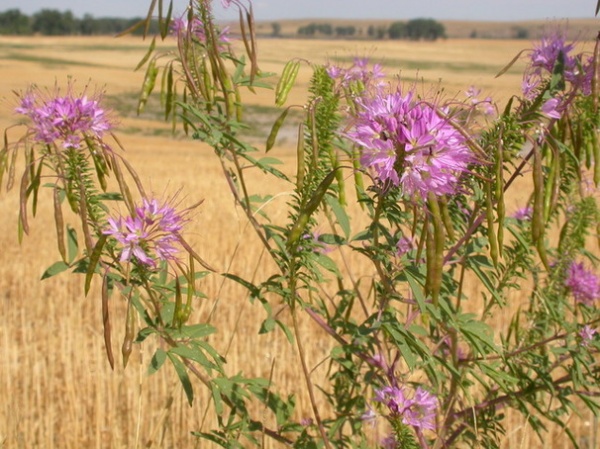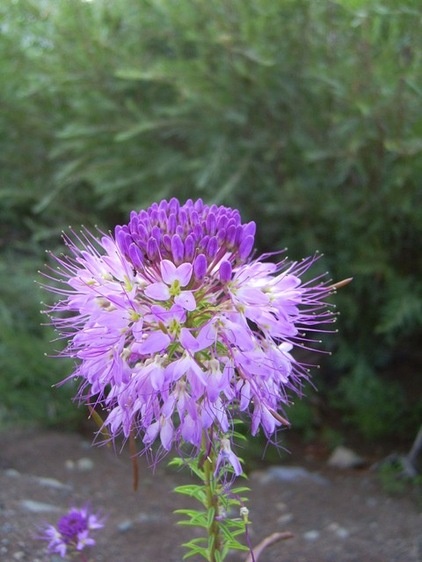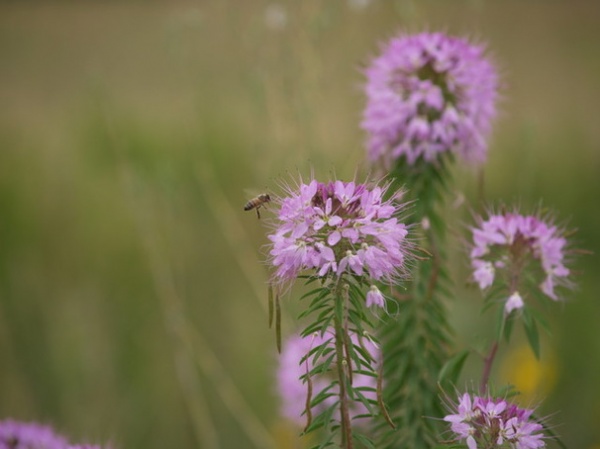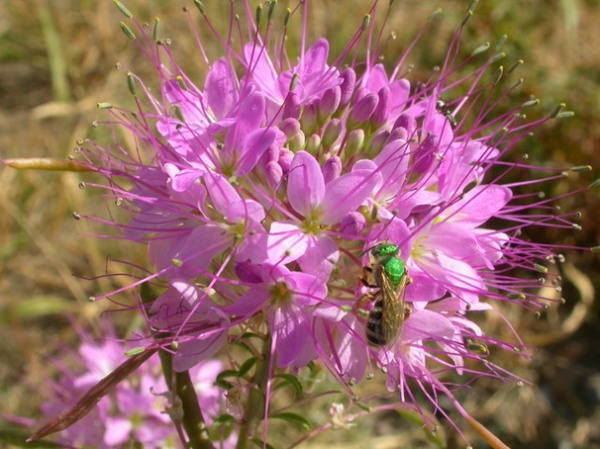Great Design Plant: Cleome Serrulata
http://decor-ideas.org 07/09/2015 20:13 Decor Ideas
If you have a dry, sunny, well-drained area where nothing seems to grow, Rocky Mountain beeplant (Cleome serrulata) will fit the bill, with its late-summer profusion of flowers and abundant nectar. Gardeners far and wide have told me of the massive numbers of bees and other insect pollinators that come to beeplant, but you have to see it to believe it.

Botanical name: Cleome serrulata
Common names: Rocky Mountain beeplant, skunk weed, cleome, spider flower
Origin: Native from North Dakota south to Oklahoma and west, with scattered pockets in the upper Midwest from Ohio and Michigan to Missouri and Minnesota
Where it will grow: Hardy to -40 degrees Fahrenheit (USDA zones 3 to 8; find your zone)
Water requirement: Medium to dry soil
Light requirement: Full sun
Mature size: 3 to 4 feet tall and wide
Benefits and tolerances: Very drought tolerant; superb nectar source for bees and other pollinators
Seasonal interest: Blooms in mid to late summer
When to plant: Sow seed outdoors in late fall through midwinter or let self-sow; the plants are difficult to propagate in nursery pots.
Photo by Matt Lavin

Distinguishing traits. Rocky Mountain beeplant puts on quite a show for several weeks in late summer. But the bright flowers aren’t the only performers — many types of bees and other hungry pollinators come to gorge on the large amounts of nectar this plant produces.
See more ways to invite bees into the garden
Photo by cba_inc

How to use it. Make a statement in a wide border with beeplant. if you have the space, I’d recommend a thick, healthy stand of them for maximum flower punch. You’ll draw in even more pollinators, who can more easily see a group of the same plant than a loner.
The airy texture of beeplant’s thin foliage make it more drought tolerant but also less conspicuous in a garden, so help it stand out by letting its height go unopposed by other nearby plants. Surround it with shorter gasses like little bluestem (Schizachyrium scoparium) or sideoats grama (Bouteloua curtipendula) to bring some of the arid Plains, deserts and mountains to your landscape.
Photo by lostinfog

Planting notes. Drought-tolerant beeplant prefers sandy soil, but a well-drained and lean soil will work, too. It’s an annual but will self-sow in open soil, so don’t mulch too much. Even better, let green mulch like grasses or sedges do the work for you.
It’s not commonly seen for sale in pots, as it can be finicky to grow. Sow seeds thickly in late fall through midwinter, as it benefits from several weeks of cold, wet weather to germinate in spring.
Photo by Matt Lavin
More:
Browse plants native to other regions of the U.S.
Learn more about the beneficial insects you can welcome into your garden
Related Articles Recommended












